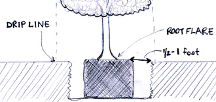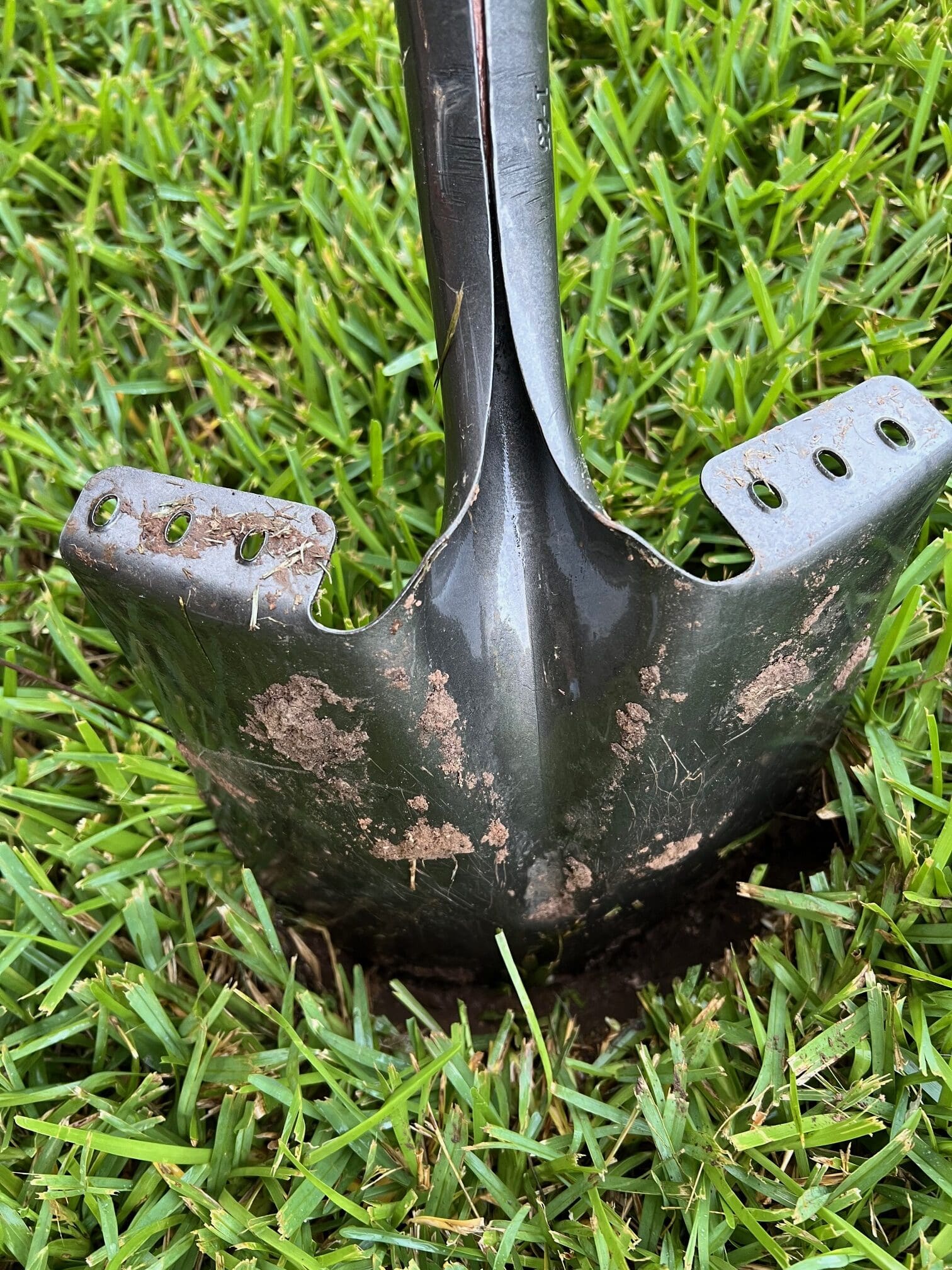Tree Planting Instructions
- Pick a species of tree that will do the best in your soil type and zone. Be sure to buy a locally grown tree as they will adapt best to the soil and water types of your area.
- Be sure to choose a quality container grown tree species that does not have girdling roots.
- Keep in mind how big your tree will grow! Pick the correct spot to plant your tree. Choose a spot away from power lines and clear of buildings. Stay away from septic drain fields and water pipes.
- Dig a hole that is just as deep as the root ball (no deeper!) and about 1-2 foot wider than the root ball of your tree. Dig your hole shallow and wide with rough, jagged sides.

- Remove the container, inspect the root system. If the roots of the tree are growing in a spiraling motion cut with a knife or unravel them so they will spread out instead of growing in a circle. New roots will flush and grow from these cuts.
- Place your tree in the hole gently, handling the root ball, not the trunk. Make sure that when planted the top of the root ball will be even with the surrounding soil level but NOT BELOW GROUND LEVEL. Being a little high is better than being too low. If you need to remove the tree and add soil back to the bottom of the hole, then now is the time to do it. Keep in mind that this soil added back to the bottom will compact when watered in so make sure you add enough.
- It is very important that you do not cover up the natural root flare of the tree with soil or mulch. It is also important that the tree doesn’t settle and allow soil or mulch to cover the root flare of the tree.
- If you have good, well drained soil, then amend the original native soil 30% with premium compost. If you have poor soil then bring in a quality planting mix that has a combination of granite sand, topsoil, pine bark, and premium compost. Do not use bagged potting soil to plant your tree. It is safe to use a bagged garden soil or landscape mix. We recommend our bulk custom landscape mix.
- We also recommend using an organic product containing mycorrhizae fungi and beneficial bacteria at the time of planting. Our favorites are Fox Farm Jump Start or Microlife Ultimate. Use the correct amount of product and mix it evenly with the backfill soil. Do not use tree fertilizer spikes.
- Position your tree so that its best features are facing the desired viewing area, and check that the tree is standing straight. Continue to check the orientation and keep it straight as you begin to add soil.
- Add soil a little at a time around the root ball and SLIGHTLY tamp it down around the root ball with the handle of the shovel. Build a dam around the outside of the root-ball with the excess soil. This will allow more water to stay around the root zone. Be sure to not cover the tree flare with soil.
- Liquid root stimulator or Super Thrive applied about once a month for the first year will be very beneficial to your tree.
- Be sure to stake your tree well with three to four anchor points to avoid shifting, which causes new roots to break off. We recommend the Arborbrace tree staking kit. Keep the tree staked until rooted well. You may remove the staking when you can give the trunk of the tree a good shake and you do not see the ground around it move or jiggle at all. Be sure to give your newly planted tree a good layer of mulch that is at least 2-3” deep and extends a little past the drip line of the tree (the outside edge of the canopy). Be sure to pull the mulch away from the trunk of the tree 3” to 6” so as to not cover the root flare up. Reapply mulch yearly.
- Water your tree religiously for at least one year using the following guidelines, and subsequent years if we experience high heat or drought conditions. Make sure you are saturating the entire root ball and the soil area beyond it as well. Be sure to water deeply and DO NOT RELY ON RAIN OR SPRINKLER IRRIGATION. Please note that this is just a general watering guideline and if you have heavy clay soils it is very easy to overwater a tree and kill it.
Guidelines for Watering Your Tree for the First Year
| Temperature | Frequency of Watering |
| 90-100 Degrees | every day |
| 80-90 Degrees | every other day |
| 50-80 Degrees | twice a week |
| Winter | once a week |
- Clay and other poorly draining soils may not require as frequent watering as indicated above. Overwatering or trees staying too wet can be as damaging as trees being too dry. The best way to check for soil moisture is to dig down under the mulch 3 or 4 inches and feel if the soil is moist.
- Sleep, Creep, and Leap: It takes at least three years of good watering and feeding for a tree to get fully established. You may not notice a lot of growth up top on your tree for the first two years. This is because it is putting all of its energy into growing a healthy root system down below. If you cared for your tree well, you should start to see substantial growth by the third year.
- Do not use weed and feed type products or spray broadleaf herbicides in any areas nearby trees. These products can severely stunt or even kill your trees, and is very detrimental to beneficial soil biology. This applies to both mature and young trees.
- Be sure to put a deer cage around your tree trunk to protect it from deer rubbing their antlers on it.
- Apply an organic based granular fertilizer twice a year, in spring and fall, around the drip line of your tree. We do not recommend the use of tree fertilizer spikes or synthetic fertilizers.
- See our tree care and maintenance recommendations for long term care and maintenance of your tree.
|
|||||




